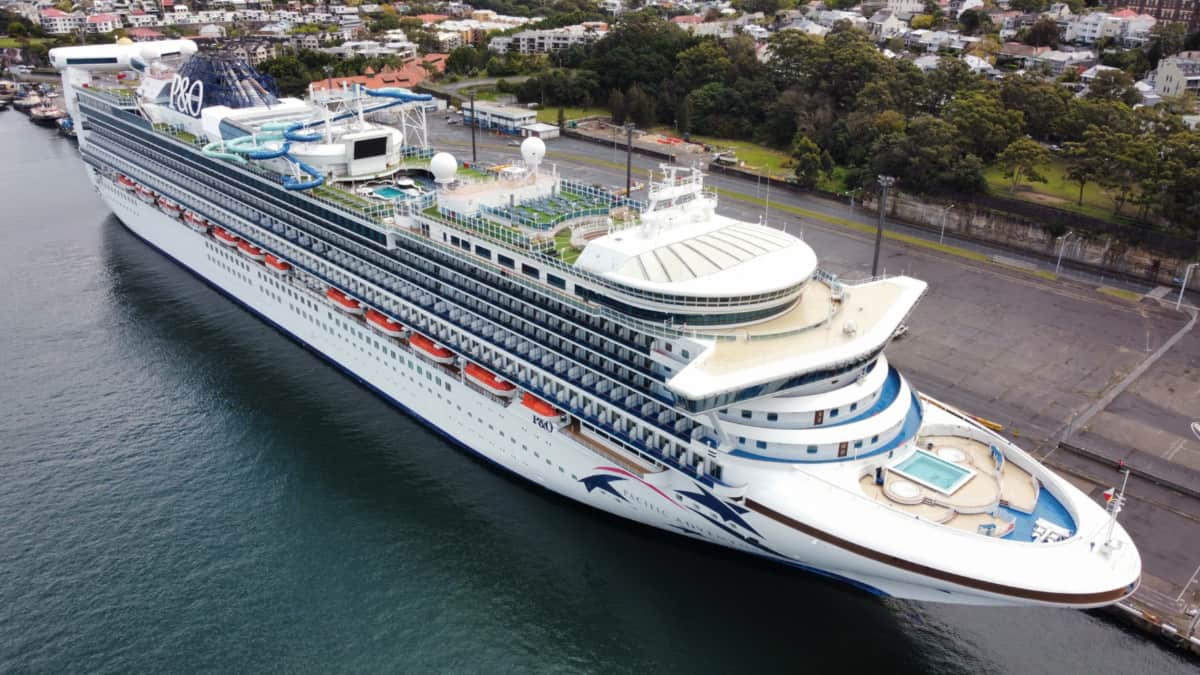P&O Cruises Australia has completed the refurbishment of Pacific Adventure, which now includes new luxury cabanas and enhanced entertainment and spa facilities.
The Debut of New Upgrades on Pacific Adventure
Pacific Adventure returned from a comprehensive dry dock in Singapore on April 12, boasting a host of luxurious upgrades. The P&O Cruises Australia ship’s enhancements include the exclusive Byron Beach Club Cabanas.
Deborah Cogin, vice president of guest experiences at P&O Cruises Australia, expressed enthusiasm about the new offerings, saying, “The crew worked extremely hard in dry dock, and the end result is a great upgrade to an already fantastic ship.
She continued, “These improvements underscore our commitment to maintaining our P&O fleet and providing exceptional experiences for our guests. We can’t wait to have guests come on board to see the enhancements for themselves.”
The enhancements include the luxurious new cabanas, designed to offer a premium experience with amenities like dedicated beverage service, shaded areas, and a $100 food credit. Each cabana accommodates up to four guests and is equipped with modern comforts, including a mini-bar fridge, TV, and fan.
Refurbishment Details
The newly introduced Byron Beach Club Cabanas, which also offers personalized services like towel service, is just one of the additions to the 108,865-gross-ton Pacific Adventure following its extensive dry dock. The newest of P&O Cruises Australia’s three-ship fleet, the ship went into dry dock in Singapore in February for extensive refurbishments.
About 15,000 square meters of carpet and 3,700 square meters of turf were replaced, 3,000 square meters of walls and ceilings were repainted, and 2,000 pieces of furniture were updated.

To further enhance the leisure experience, Pacific Adventure now sports new day beds on the poolside decks and upgraded onboard entertainment experiences, including the installation of a state-of-the-art sound system.
The Elemis at Sea Spa also received a refurbishment, with upgraded treatment rooms and a new barber’s chair to offer rejuvenating spa experiences and professional grooming services.
Read Also: Cruise Line Creates New Sailings After Rescheduled Ship Dry Dock
The 2,600-passenger Pacific Adventure is one of the larger ships in the P&O Cruises Australia fleet, homeported in Sydney. Arriving from Singapore to start a new cruising schedule, the ship began a 9-night “Pacific Island Hopper” voyage on April 12, sailing roundtrip from Sydney to Noumea and Lifour, New Caledonia, and Mystery Island, Vanuatu.
The ship will sail several roundtrip jaunts, typically 3 to 4 nights, to calls near Syndey, such as Hobart, Tasmania, and Philip and Moreton Islands, Australia. Longer cruises take passengers to Fiji, and Great Barrier Reef calls, including Cairns, Willis Island, and Airlie Beach, Australia.

P&O Cruises first entered the Australian market with the 21,600-gross-ton Fairstar. Seven additional ships sailed the seas Down Under before its current fleet, consisting of the 77,441-gross-ton Pacific Explorer, the 109,000-gross-ton Pacific Encounter, and Pacific Adventure.
What Happens When a Ship Goes into Dry Dock
When a ship goes into dry dock, it undergoes a series of essential maintenance procedures, repairs, and upgrades that are not feasible while in the water. Repairs may include fixing hill plates, servicing propellers, and overhauling rudders.
Safety equipment and emergency systems are also checked and updated to comply with regulations. Ships typically go into dry dock every two to five years, depending on the type of vessel, its age, and the regulations of the maritime authorities under which the ship is registered.
Pacific Adventure, built in 2001 and last refurbished in 2021, is registered in England. Per SOLAS, the International Convention for the Safety of Life at Sea, cruise ships must inspect the bottom of the vessel annually, with two inspections in a five-year period carried out in dry dock.


Leave a Reply